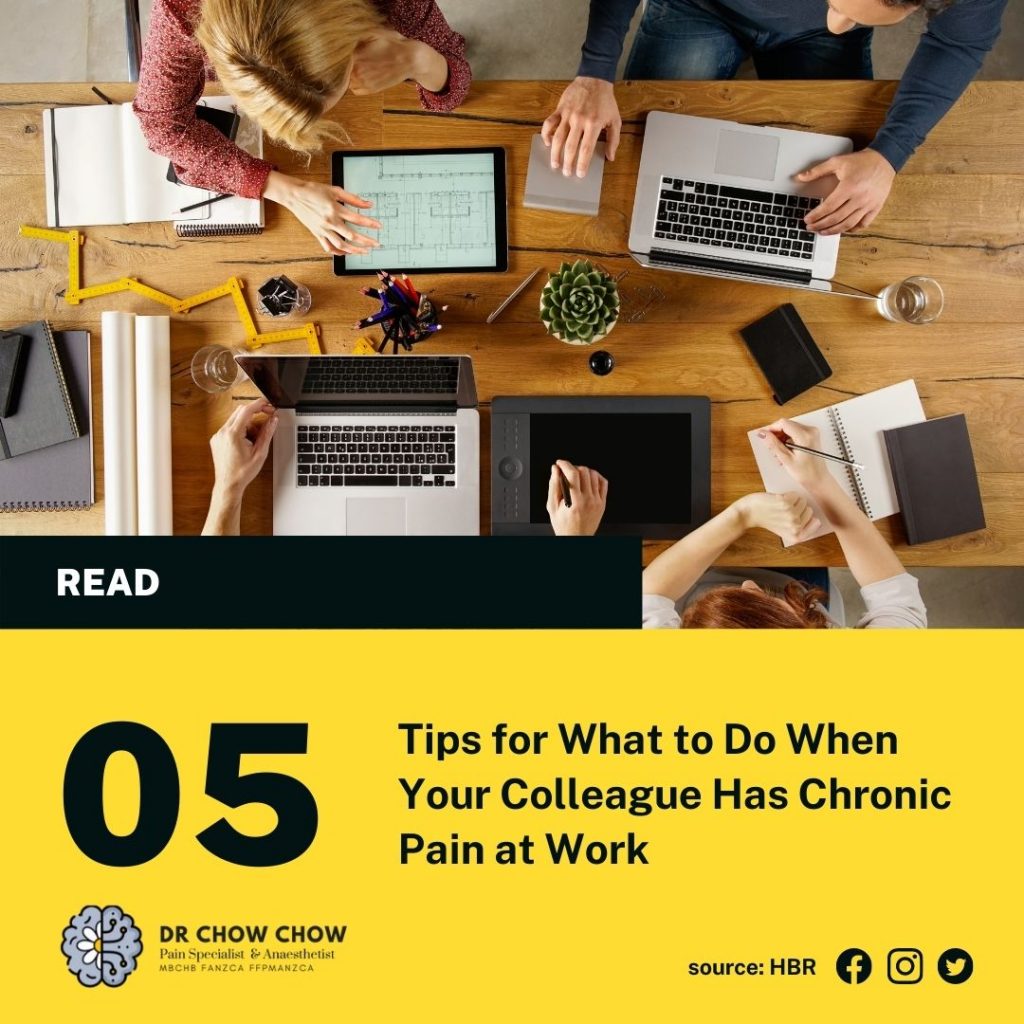Pain in the workplace isn’t a topic that comes up often, and there are many reasons for this. Not surprisingly though, it is estimated that approximately 40% of all employees experience chronic pain at some point during their working life. Chronic work related pain impacts productivity, morale and health care costs – yet few companies acknowledge or address the prevalence of such issues!
The Harvard Business Review has developed a 5 key action points how to support your colleagues experience chronic pain.
Table of Contents
1. Be ready to support employees in chronic pain by listening
Many leaders feel uncomfortable or not equiped to discuss chronic pain and its implication with their colleagues. And the employees may also feel reluctant to talk about it due to stigmatisation, discrimination or career prospect.
Leaders should not pressure their employees to share personal information about chronic pain or demand to disclose their pain history. Instead, active open listening and providing support when employees choose to have the conversations. Employees should feel more comfortable when they know that their leaders put emphasis on health and safety.
2. Focus on preventing work-related chronic pain.
Workplaces can be the source of chronic pain development. Poor ergonomics should be eliminated, this includes heavy lifting, standing all day, working in awkward positions.
3. Design jobs with autonomy and skill variety.
Most job should come with job descriptions, job-related duties and responsibilities. Research suggests providing autonomy are necessary for healthy and safe work. Working at a job that requires multiple skills can keep employees functional.
4. Allow flexible work.
Thanks to the Covid-19 pandemic, many employees have learned how to work remotely. Job productivity and performance is largely unaffected by remote work and technology has enabled us to collaborate more than ever. Work should no longer be fixed hour, rather flexible enough to accommodate physical needs and measure the performance and productivity instead.
5. Increase access to chronic pain management resources in the organisation.
Leaders should consider allowances and resources to provide timely access to chronic pain management. This should include access to pain services, support group, ergonomic furniture, group pain education.
6. Resources
Duygu Biricik Gulseren, Firat Sayin, E. Kevin Kelloway, and Nick Turner. When Someone on Your Team Has Chronic Pain. Harvard Business Review. July 19, 2021. https://hbr.org/2021/07/when-someone-on-your-team-has-chronic-pain
Summary
Chronic pain is a complex biopsychosocial issues. Prevention, early recognition, early access and early treatments are the core elements to manage chronic pain at work. The Harvard Business Review five practical strategies highlights effective leadership would save thousands of dollars and cultivate a safe and healthy workplace.
Have any questions about how to deal with chronic pain at work? Contact email info@drchowchow.com



